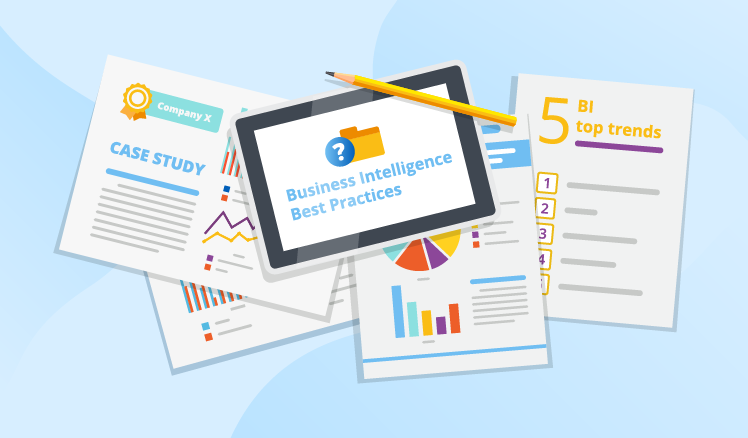Business Intelligence Best Practices and Where to Find Them
During my 16 years of BI implementation and consulting practice, I got used to treating the term ‘best practices’ with the utmost care, as quite often it’s just a fine word intended to capture the audience’s attention. Here, I decided to share my approach to distinguishing seeming business intelligence best practices from genuine ones with those readers who are about to start their BI implementation projects.

BI best practices that aren’t really helpful
I won’t recommend dedicating too much time to business intelligence best practices that simply share general organizational tips applicable to any IT solution. If you spend more than 5 minutes and get as much as ‘define the strategy first’, ‘get organization-wide buy-in’ or ‘don’t build everything on day 1’, you’d better switch to another source of wisdom and get really useful information.
Best practices may be BI-specific, still superficial. For example, I doubt that businesses can get much value from ‘identify preferred data integration method’. This advice leaves too many questions, some of which are ‘What integration methods are available in general?’, ‘Should we try them all in practice or just learn in theory?’, ‘Whose preferences should we rank the highest?’ Another example of a similar best practice is ‘Implement an easy-to-use BI application that integrates with desktop applications’.
Where to get valuable BI best practices?
Check industry leaders
For helpful insights, you can check what BI initiatives the industry leaders have chosen and implemented. Say, if you are a retailer, you can see that major players in your industry focused on such initiatives as 360-degree customer view, customer churn prevention, and demand forecasting. If you are a manufacturer, you are most likely to find out about predictive maintenance and supply chain optimization. Currently, such information is widely available – you may find many articles describing real-life use cases with a decent degree of detail, quite often even with the numeric effect on revenue or customer satisfaction.
Study BI initiatives for small and midsized business
It is useful to explore BI initiatives implemented by midsized and small businesses (especially, if your company belongs to any of these segments) to find segment-specific use cases and examine sample business reports and dashboards. To get this information, you can turn to vendors’ case studies, like the one from our project portfolio – BI implementation for a management consultancy.
Explore BI trends
Also, it makes sense to read about the recent BI advancements and trends. For such insights, you can explore comprehensive whitepapers by research and advisory companies like Gartner, TDWI, McKinsey & Company, BARC. For example, according to BARC that voices the opinion of 2,600+ respondents, the list of BI trends that are important in 2019 includes such aspects as data quality management, data visualization, self-service BI, data warehouse modernization, agile BI development, and advanced analytics. You can also turn to reputable media platforms, such as Forbes.com and CIO.com, that also often post articles with business intelligence or data analytics trends.
To sum it up
If you search for valuable information, check the initiatives of industry leaders, use cases specific to a certain company segment, as well as recent BI advancements and trends. They will help you to better define your BI needs and put them into practice.
